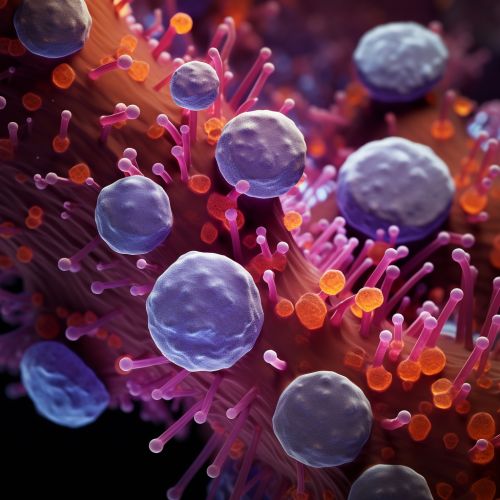Gram stain
Introduction
The Gram stain is a method of staining bacterial cells that was first developed by the Danish bacteriologist Hans Christian Gram in 1884. This technique is one of the most important and widely used in the field of microbiology and is named after its inventor. The Gram stain allows for the differentiation of bacteria into two large groups: Gram-positive and Gram-negative. This differentiation is based on the chemical and physical properties of their cell walls.


Principle of the Gram Stain
The principle of the Gram stain involves the application of a series of dyes that leaves a characteristic color in different types of bacteria. The key to this process is the composition of the bacterial cell wall. In Gram-positive bacteria, the cell wall is thick and composed of a complex polymeric substance known as peptidoglycan. In contrast, Gram-negative bacteria have a thinner peptidoglycan layer and an additional outer membrane.
The Gram stain procedure involves four basic steps: the application of a primary stain (Crystal Violet), the addition of a mordant (Gram's Iodine), the application of a decolorizer, and counterstaining with Safranin.
Procedure of the Gram Stain
The Gram stain procedure begins with a heat-fixed smear of bacterial cells on a microscope slide. The primary stain, crystal violet, is applied to the slide, staining all cells purple. This is followed by the addition of Gram's iodine, which forms a complex with the crystal violet and traps it in the cell.
The slide is then washed with a decolorizer, which removes the crystal violet-iodine complex from cells that have a thin layer of peptidoglycan in their cell wall (Gram-negative). However, in cells with a thick peptidoglycan layer (Gram-positive), the crystal violet-iodine complex is not washed out and the cells remain purple.
Finally, a counterstain (safranin) is applied. This stains decolorized cells red. The result is that Gram-positive bacteria appear purple under the microscope, while Gram-negative bacteria appear red.
Interpretation of Results
The interpretation of Gram stain results is based on the color of the bacterial cells when observed under a microscope. Gram-positive bacteria retain the crystal violet stain and appear purple, while Gram-negative bacteria take up the counterstain (safranin) and appear red.
The Gram stain is not infallible, however. Some organisms are Gram-variable (meaning they may stain either negative or positive), and some are not easily stained by either method. Therefore, the Gram stain is not always the definitive identification of bacterial species, but it does provide valuable information in the classification and characterization of bacteria.
Clinical Significance
The Gram stain is often used in the clinical laboratory to quickly identify the general class of a bacterium isolated from a patient sample. The Gram stain result, along with other information, guides the selection of an appropriate drug for treatment. Gram-positive bacteria are generally more susceptible to antibiotics than Gram-negative bacteria, which are protected by their outer membrane.
